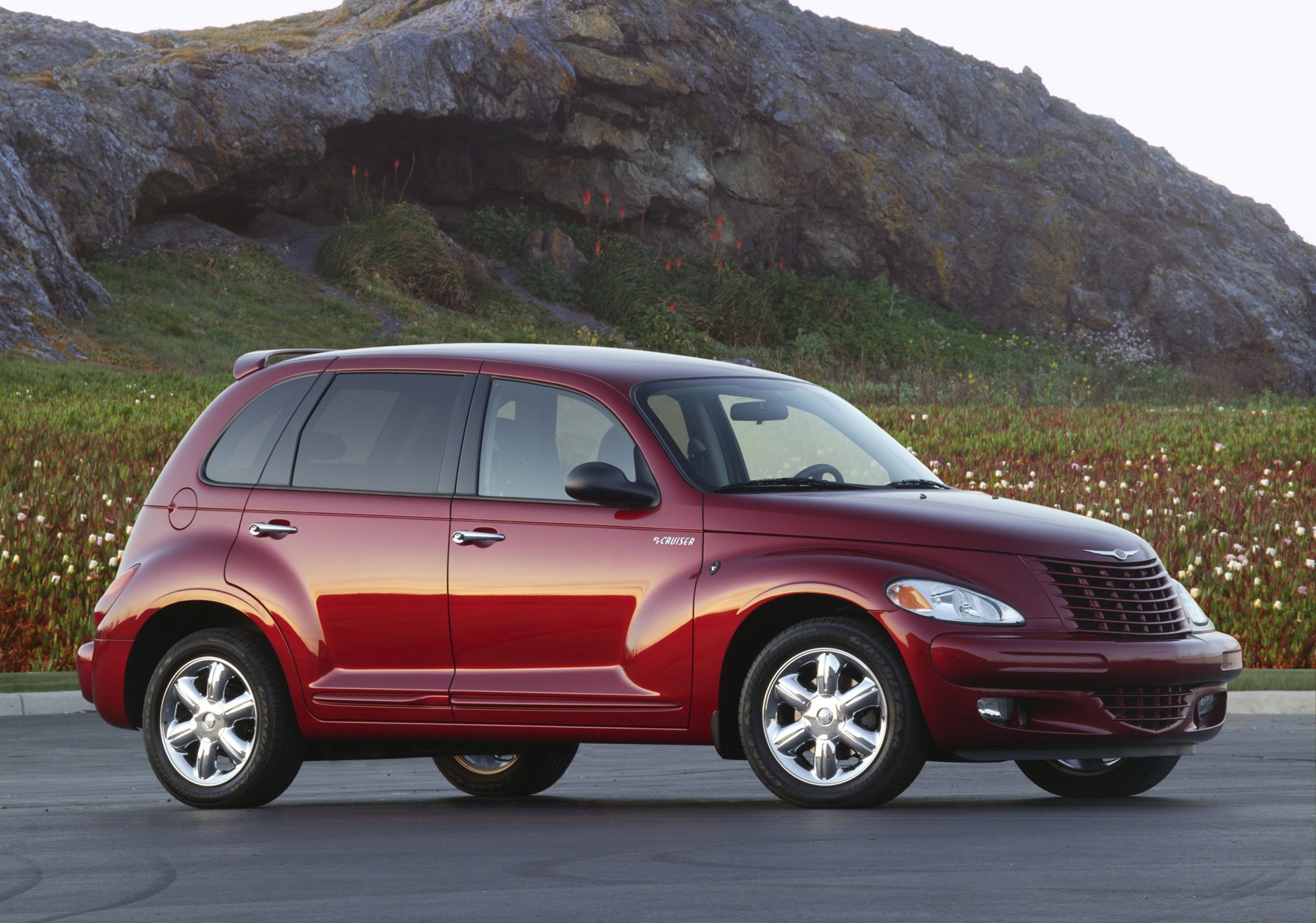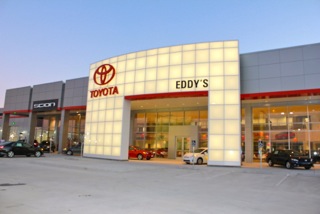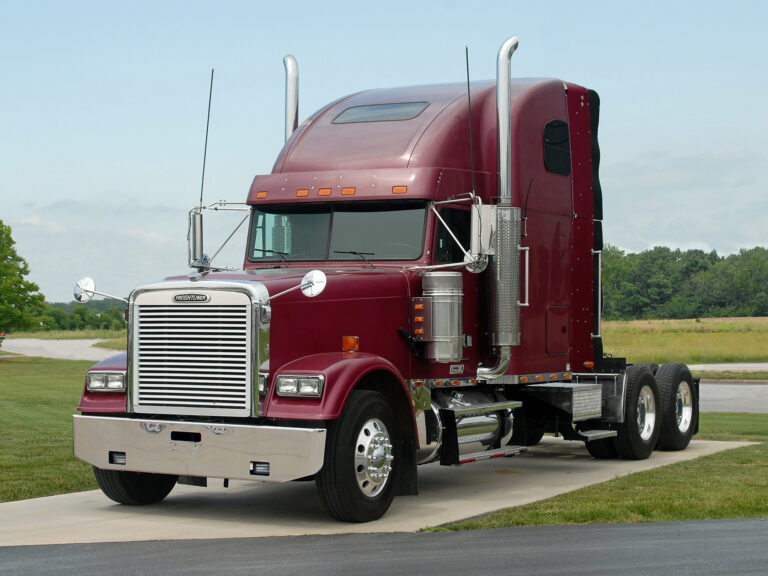Car Companies With Luxury Brands: A Strategic Masterclass in Automotive Excellence
Car Companies With Luxury Brands: A Strategic Masterclass in Automotive Excellence cars.truckstrend.com
The automotive world is a vast, complex ecosystem, but few areas are as fascinating and strategically intricate as the relationship between major car companies and their luxury brands. Far from being mere badge engineering, the ownership of prestigious marques by larger automotive groups is a deliberate, multi-faceted strategy designed to capture diverse market segments, elevate brand perception, and drive substantial profitability. This article delves into the captivating realm of car companies that skillfully manage an array of luxury brands, exploring the strategic imperatives, the key players, the synergies and challenges involved, and what it all means for the discerning consumer.
The Strategic Imperative: Why Parent Companies Own Luxury Brands
Car Companies With Luxury Brands: A Strategic Masterclass in Automotive Excellence
At its core, the decision for a mass-market automotive conglomerate to acquire or cultivate luxury brands is rooted in a shrewd understanding of market dynamics and consumer psychology. This isn’t just about selling more cars; it’s about optimizing an entire business portfolio.
- Market Segmentation and Diversification: The most obvious benefit is the ability to target different demographics and price points. While a parent company like Toyota caters to the broad middle class with its reliable sedans and SUVs, its luxury arm, Lexus, appeals to affluent buyers seeking refined comfort and advanced technology. This segmentation allows the company to maximize its reach across the entire economic spectrum.
- Brand Prestige and Image Elevation: Owning a revered luxury brand can cast a halo effect over the entire corporate group. The technological prowess, design innovation, and meticulous craftsmanship associated with a Bentley or a Rolls-Royce can subtly enhance the perceived quality and aspiration of the parent company’s mainstream offerings, even if no direct technological transfer occurs.
- Enhanced Profit Margins: Luxury vehicles, by their very nature, command significantly higher profit margins than mass-market cars. Premium materials, bespoke options, advanced engineering, and the sheer exclusivity of the brand allow for substantial markups. These high-margin sales are crucial for bolstering a company’s financial health and funding future research and development.
- Technological Innovation and Spillover: Luxury brands often serve as a testbed for cutting-edge technologies. Features like advanced driver-assistance systems, sophisticated infotainment interfaces, new powertrain solutions, or groundbreaking material science often debut in high-end models before trickling down to more affordable vehicles. This "trickle-down" effect benefits the entire portfolio, accelerating innovation across the board.
- Economies of Scale and Shared Resources: While luxury brands maintain their distinct identities, parent companies can leverage shared platforms, supply chains, manufacturing expertise, and even R&D resources. For instance, a common chassis architecture might underpin a mainstream SUV and a luxury performance crossover, significantly reducing development costs while allowing each brand to imbue the vehicle with its unique character.

Key Players and Their Illustrious Luxury Portfolios
The automotive landscape is dotted with powerful conglomerates that have mastered the art of managing multiple luxury brands. Here are some of the most prominent examples:
- Volkswagen Group: Perhaps the quintessential example, the VW Group is an automotive empire. Beyond the Volkswagen brand, it boasts Audi (premium German engineering), Porsche (sports cars and performance SUVs), Lamborghini (exotic supercars), Bentley (ultra-luxury grand tourers), and Bugatti (hypercars). This diverse portfolio covers nearly every segment of the luxury market, from accessible premium to ultra-exclusive.
- BMW Group: While BMW itself is a premium brand, the group extends its reach with MINI (stylish, compact premium cars) and the pinnacle of automotive luxury, Rolls-Royce. This combination allows BMW to cater to different interpretations of "premium" and "luxury."
- Mercedes-Benz Group AG (formerly Daimler AG): Mercedes-Benz stands as a luxury icon, but the group further segments its offerings with Mercedes-AMG (high-performance variants) and Mercedes-Maybach (ultra-luxury sedans and SUVs, emphasizing opulence and rear-seat comfort).
- Toyota Motor Corporation: Toyota created Lexus in the late 1980s specifically to compete with established European luxury brands in the North American market. Lexus quickly gained a reputation for unparalleled reliability, refined comfort, and exceptional customer service, establishing itself as a formidable luxury contender.
- Hyundai Motor Group: A more recent success story, Hyundai launched Genesis as its standalone luxury brand in 2015. Genesis has rapidly gained critical acclaim for its distinctive design, luxurious interiors, and compelling value proposition, challenging established players.
- Tata Motors: The Indian conglomerate Tata Motors famously acquired Jaguar Land Rover (JLR) from Ford in 2008. Jaguar offers sleek, performance-oriented luxury vehicles, while Land Rover specializes in premium SUVs with unmatched off-road capability.
- Stellantis: Formed from the merger of Fiat Chrysler Automobiles and PSA Group, Stellantis houses several luxury and premium brands, including Maserati (Italian performance and elegance), Alfa Romeo (sporty Italian driving dynamics), and DS Automobiles (French avant-garde luxury).
- Geely Holding Group: The Chinese automotive giant Geely has made significant inroads into the luxury segment, owning Volvo (known for safety and Scandinavian design), Polestar (performance electric vehicles spun off from Volvo), and having a majority stake in Lotus (lightweight sports cars).
- General Motors: Cadillac serves as GM’s premier luxury division, undergoing a significant resurgence in recent years with a focus on cutting-edge technology, bold design, and high-performance V-series models.
- Ford Motor Company: Lincoln is Ford’s luxury brand, historically known for its comfortable, American-style luxury, and now pivoting towards modern design and advanced technology.


The Synergies and Challenges of Brand Management
Managing a portfolio of diverse brands, especially those in the luxury segment, is a delicate balancing act.
Benefits (Synergies):
- Platform Sharing: Common vehicle architectures (e.g., VW Group’s MLB Evo platform used by Audi, Porsche, and Bentley) allow for significant cost savings in development and production.
- Component Sharing: While often hidden, certain components like infotainment systems, switchgear, or advanced safety sensors might be shared across brands, customized to fit each brand’s identity.
- R&D Collaboration: Centralized research and development departments can share findings and expertise across all brands, accelerating innovation.
- Supply Chain Leverage: A larger group commands greater purchasing power, securing better deals from suppliers.
- Talent Pool: The ability to move top design, engineering, and marketing talent between brands fosters cross-pollination of ideas and best practices.
Challenges:
- Brand Differentiation and Cannibalization: The biggest challenge is ensuring each luxury brand maintains a distinct identity and market positioning to avoid competing directly with stablemates. Porsche must remain distinct from Audi, and Maybach from AMG.
- Maintaining Exclusivity: Over-sharing platforms or components can dilute a luxury brand’s perceived exclusivity. The art is to share the unseen while ensuring the visible and experiential elements remain unique.
- Balancing Heritage with Innovation: Luxury brands often have a rich history and loyal customer base. Innovating too aggressively can alienate traditionalists, while stagnating can lose them to more modern competitors.
- Integration of Acquisitions: When a company acquires an existing luxury brand (e.g., Tata with JLR), integrating it culturally and operationally while preserving its unique spirit is complex.
- Quality Control Across Tiers: Ensuring consistent, top-tier quality across all luxury brands, despite their different production methods and target markets, is paramount to maintaining reputation.
How Luxury Brands Maintain Exclusivity and Appeal
Beyond the badge, luxury brands employ several strategies to justify their premium pricing and cultivate desirability:
- Design and Craftsmanship: Unique, often handcrafted interiors using premium materials like open-pore wood, genuine leather, polished metals, and bespoke trim options. Exterior designs are often more audacious, elegant, or performance-focused.
- Performance and Technology: Leading-edge powertrains (powerful engines, advanced hybrids, groundbreaking EVs), sophisticated suspension systems, and state-of-the-art infotainment and driver-assistance technologies.
- Brand Experience: This extends beyond the car itself to the entire ownership journey. It includes white-glove dealership service, personalized customization options, exclusive events, concierge services, and a sense of belonging to an elite club.
- Marketing and Positioning: Highly targeted advertising that emphasizes aspiration, heritage, performance, or bespoke luxury. Limited editions and exclusive models further enhance desirability.
Practical Advice for Consumers
For those considering a luxury vehicle from a parent company’s portfolio, here’s some practical advice:
- Look Beyond the Badge: Understand what specific attributes each luxury brand within a group offers. Is it performance (AMG, M, Porsche), ultra-luxury comfort (Maybach, Rolls-Royce, Bentley), cutting-edge tech (Lexus, Genesis), or a blend?
- Research Sub-Brands and Trims: Within a single luxury brand, there are often performance divisions (AMG, M), ultra-luxury sub-brands (Maybach), or specific trim levels that drastically alter the car’s character and price.
- Consider Total Cost of Ownership: Luxury cars often come with higher insurance premiums, more expensive parts, and specialized maintenance requirements. Depreciation can also be significant, though some models hold value better than others.
- Experience the Dealership: The luxury car buying experience should be elevated. Pay attention to the sales process, service department, and overall customer care, as this is part of what you’re paying for.
- Don’t Overlook Value Propositions: Brands like Genesis offer incredible value in the luxury segment, often providing more features and performance for less money than established European rivals.
Car Companies With Luxury Brands: Indicative Portfolio and Market Position
This table provides a snapshot of major automotive groups and their luxury brands, along with typical starting price ranges for their vehicles (highly variable based on model and region) and their primary market differentiator.
| Parent Company | Luxury Brand(s) | Indicative Starting Price Range (USD) | Key Differentiator / Market Position |
|---|---|---|---|
| Volkswagen Group | Audi | $45,000 – $170,000+ | Progressive design, advanced technology, Quattro AWD, balanced luxury |
| Porsche | $60,000 – $250,000+ | Iconic sports car performance, driving dynamics, brand prestige | |
| Lamborghini | $200,000 – $600,000+ | Exotic supercars, extreme performance, bold styling | |
| Bentley | $200,000 – $350,000+ | Ultra-luxury grand touring, exquisite craftsmanship, British heritage | |
| Bugatti | $3,000,000 – $10,000,000+ | Hypercars, extreme exclusivity, unparalleled speed and engineering | |
| BMW Group | BMW | $40,000 – $180,000+ | "Ultimate Driving Machine," sporty luxury, innovative technology |
| MINI | $30,000 – $50,000+ | Premium compact, go-kart handling, iconic British design | |
| Rolls-Royce | $350,000 – $600,000+ | Pinnacle of ultra-luxury, bespoke customization, supreme comfort | |
| Mercedes-Benz Group AG | Mercedes-Benz | $40,000 – $200,000+ | Sophisticated luxury, comfort, safety, technological innovation |
| Mercedes-AMG | $60,000 – $250,000+ | High-performance variants, aggressive styling, track-ready power | |
| Mercedes-Maybach | $180,000 – $300,000+ | Ultra-luxury, supreme rear-seat comfort, ultimate opulence | |
| Toyota Motor Corp. | Lexus | $40,000 – $100,000+ | Reliability, refined comfort, quiet interiors, exceptional service |
| Hyundai Motor Group | Genesis | $40,000 – $80,000+ | Distinctive design, strong value, advanced tech, refined luxury |
| Tata Motors | Jaguar | $50,000 – $100,000+ | Elegant design, sporty handling, British heritage |
| Land Rover | $50,000 – $250,000+ | Premium SUVs, unmatched off-road capability, rugged luxury | |
| Stellantis | Maserati | $80,000 – $200,000+ | Italian performance, distinctive sound, elegant design, exclusivity |
| Alfa Romeo | $45,000 – $90,000+ | Sporty Italian driving dynamics, passionate appeal | |
| DS Automobiles | (Varies by market, typically $40k-$70k) | French avant-garde luxury, unique design, comfort-focused | |
| Geely Holding Group | Volvo | $40,000 – $80,000+ | Safety, Scandinavian design, comfort, environmental focus |
| Polestar | $50,000 – $90,000+ | Performance electric vehicles, minimalist design, sustainability | |
| Lotus (majority stake) | $80,000 – $200,000+ | Lightweight sports cars, pure driving experience | |
| General Motors | Cadillac | $45,000 – $120,000+ | American luxury, bold design, advanced technology, performance variants |
| Ford Motor Company | Lincoln | $45,000 – $90,000+ | Quiet luxury, comfort, spacious interiors, American design |
Note: Prices are highly indicative starting MSRPs for base models and can vary significantly based on trim, options, region, and market conditions. These ranges are for general reference only.
Conclusion
The strategic ownership of luxury brands by major car companies is a testament to the intricate balance between market forces, brand prestige, and financial acumen. It allows conglomerates to appeal to a broader customer base, leverage technological advancements, and secure higher profit margins, all while maintaining distinct brand identities that resonate with specific luxury aspirations. For consumers, this multi-brand approach offers an unparalleled choice, from the understated elegance of a Lexus to the audacious power of a Lamborghini, all backed by the vast resources and engineering prowess of a global automotive giant. As the industry continues to evolve, particularly with the shift towards electrification, the strategies employed by these parent companies in nurturing and differentiating their luxury marques will remain a fascinating and critical aspect of the automotive landscape.
Frequently Asked Questions (FAQ)
Q1: What defines a "luxury car brand" within a larger company?
A1: A luxury car brand is typically defined by its focus on premium materials, superior craftsmanship, advanced technology, high-performance engines, distinctive design, and an elevated ownership experience (e.g., personalized service, exclusive events). While it may share platforms or components with its parent company, its unique identity, marketing, and target demographic set it apart.
Q2: Do luxury cars share parts with non-luxury cars from the same parent company?
A2: Yes, to a certain extent. To achieve economies of scale and optimize development costs, luxury brands often share underlying platforms, basic structural components, and some non-visible mechanical or electronic parts (e.g., infotainment systems, wiring harnesses, climate control components) with their parent company’s mainstream vehicles. However, visible interior and exterior components, engine tuning, suspension setups, and materials are typically unique and of higher quality in luxury models.
Q3: Why are luxury cars so much more expensive if they share parts?
A3: The higher cost is due to several factors:
- Exclusive Design & Materials: Unique styling, handcrafted elements, and premium materials (e.g., real wood, genuine leather, carbon fiber) are expensive.
- Advanced Technology & Engineering: Luxury cars often debut cutting-edge features and bespoke engineering solutions.
- Lower Production Volumes: Luxury cars are produced in smaller quantities, meaning fixed costs are spread over fewer units.
- Brand Prestige & Exclusivity: A significant portion of the price pays for the brand’s reputation, perceived value, and the exclusive ownership experience.
- Research & Development: The significant investment in R&D for these advanced features needs to be recouped.
Q4: Are luxury cars more reliable than mainstream cars?
A4: Not necessarily. While luxury cars are built with high standards and often use robust components, their complexity due to advanced technology can sometimes lead to more issues. Furthermore, their maintenance and repair costs are typically higher due to specialized parts and labor. Brands like Lexus (Toyota) are renowned for their reliability, but others might have average or even below-average reliability ratings in consumer surveys.
Q5: What is the future of luxury car brands, especially with the rise of EVs?
A5: The future is electric and increasingly focused on connectivity and autonomous features. Luxury brands are leading the charge in developing high-performance, long-range EVs with ultra-luxurious interiors and advanced digital ecosystems. The emphasis will shift from engine sound and combustion performance to silent power, rapid acceleration, bespoke interior experiences, and seamlessly integrated technology. Customization and unique brand experiences will remain paramount.






